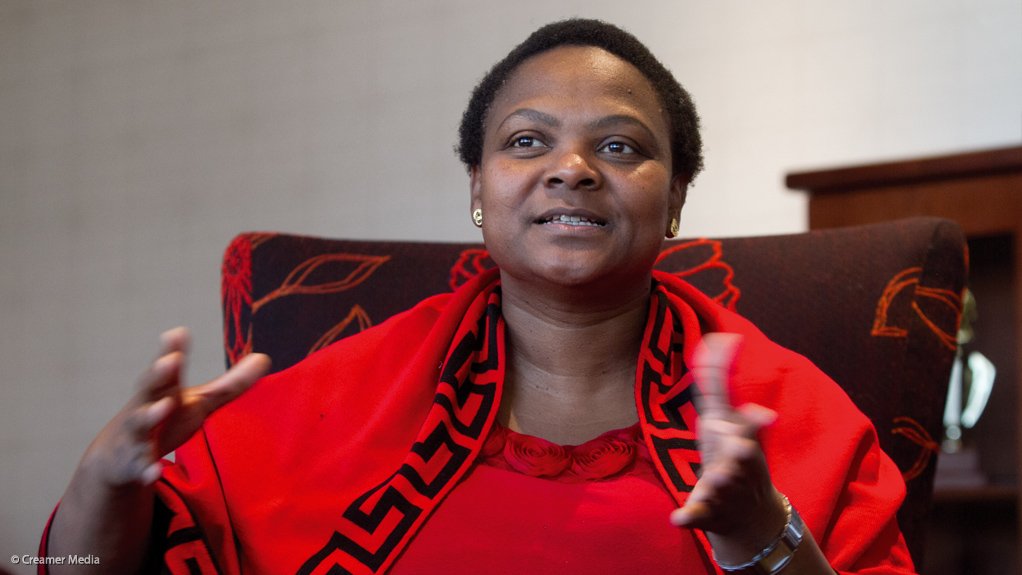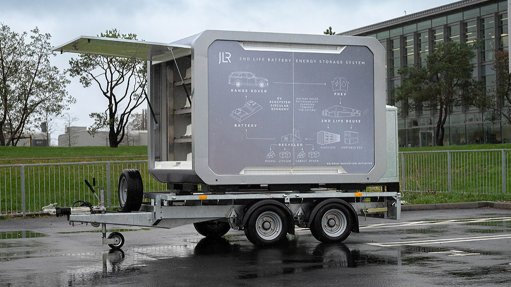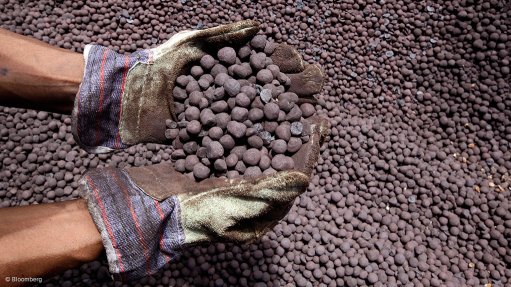SA to finalise nuclear procurement ‘roadmap’ by November


Department of Energy (DoE) director-general Nelisiwe Magubane
Photo by Duane Daws
South Africa should finalise its ‘nuclear procurement roadmap’ by November, Department of Energy (DoE) director-general Nelisiwe Magubane reports, adding that a study on the likely costs of such a programme should be completed in September.
Speaking exclusively to Engineering News Online during a broad-ranging interview, Magubane indicated that creating certainty on the approach to be adopted remained a priority for the DoE and for government, which is coordinating its decision-making through the National Nuclear Energy Executive Coordination Committee (NNEECC), previously chaired by Deputy President Kgalema Motlanthe. In April, Cabinet approved a restructuring of the NNEECC and the revised committee is chaired by President Jacob Zuma. It also comprises the Ministers of Energy, Public Enterprises, Finance, State Security, Defence and International Relations.
However, the National Development Plan also called for greater clarity on the costs and on South Africa’s ability to afford the proposed deployment of 9 600 MW of new nuclear capacity, as outlined in the current version of the Integrated Resource Plan (IRP2010). For this reason, consultants have been appointed to conduct a cost analysis, taking account of build programmes under way in the rest of the world, as well as South Africa’s recent experiences in building the mega-scale coal-fired projects, Medupi and Kusile. The study would also assess the cost implications of government’s decision to proceed on the basis of developing a nuclear industry locally, rather than simply procuring individual power stations.
Current cost estimates, Magubane notes, range from around $3 500/kW installed to $7 000/kW, with the current European build programmes at the higher end of the scale and some Asian projects at the lower end. “The idea behind the study is to look at South Africa’s unique situation and to get an assessment of the likely costs in our context.”
Simultaneously, the IRP2010 will be revised, with the new edition likely to sustain the same level of new nuclear capacity, but with revised timeframes. The delayed schedule is attributed mainly to the fact that a decision has not yet been made on the programme, but also reflects South Africa’s lower-than-expected power demand growth. Under the IRP2010, the first nuclear units were expected to be integrated into the South African electricity system between 2023 and 2030.
But by November, Magubane believes the NNEECC will have settled on how much new nuclear capacity will be procured, along with the country’s preferred technology platform, as well as its preferred procurement and ownership models.
While Cabinet has already confirmed that Eskom will be the owner-operator, she says there is still potential for the inclusion of a strategic equity partner. In fact, at its next meeting, the NNEECC will, among a range of other matters, also deliberate on the possible funding options, including Eskom’s level of ownership.
“When you own something, what does that mean? It means that you own anything from for 50% plus one share to 100%,” she mused, adding that there is, thus, substantial “wiggle room” to include a partner. However, the State-owned utility would remain the majority owner, as it would be the State that would ultimately bear the responsibility for any nuclear liabilities.
Eskom was also responsible for advancing the environmental-impact assessments across the various sites, which currently includes Thyspunt, in the Eastern Cape, as well as Bantamsklip and Duynefontein, which are both in the Western Cape. There is strong community opposition across all of the proposed sites, with antinuclear lobby groups having been formed to oppose the construction of any new nuclear facilities.
“We do acknowledge that a lot of things went wrong at Medupi and Kusile. Hence, it will be very important that we have a strategic partner.”
But Magubane indicates the nuclear programme is unlikely to be dislodged either by public opposition, or by the inclusion of higher level of gas in the revised IRP. It was also not likely to be displaced by the baseload opportunities being proposed by independent power producers (IPPs). “At this point in time, there is no possibility of going back on the nuclear programme.”
PRIVATE BASELOAD
The DoE received another strong response to its request for registration and information by potential developers of baseload and cogeneration electricity facilities, which closed on July 12. The process is regarded as a precursor to a procurement programme, which could be launched by the end of October.
On December 19, Ministerial determinations were published covering the possible procurement of new electricity projects covered by the the Medium-Term Risk Mitigation (MTRM) and IPP baseload allocations in the IRP2010.
Under the MTRM determination, the DoE is seeking to procure 800 MW of near-term cogeneration capacity, which could arise from biomass, industrial waste and combined heat and power sources. It is also aiming to secure 474 MW from natural gas projects. Through the Baseload determination, 2 500 MW has been allocated to coal-fired IPP projects, 2 652 MW to baseload or mid-merit natural gas capacity and 2 609 MW to domestic and imported hydroelectric prospects.
The DoE was weighing the possibility of entering into negotiations on some of the projects, particularly in light of the urgency created by new delays to the Medupi programme. But it now appears to have settled on a procurement process, which will be similar in nature to the Renewable Energy Independent Power Producer Procurement Programme (REIPPPP).
However, Magubane hopes that the procurement documentation and process for the MTRM and Baseload programme will be more streamlined than was the case during the first two REIPPPP bidding rounds. She says lessons have been learned and that further procurement processes, for both conventional and renewable energy, will incorporate those learnings.
Through the REIPPPP, the DoE aims to secure an initial 3 625 MW of large-scale renewables capacity, of which 2 460 MW has already been allocated across 47 projects, which secured allocations following the first two bid windows. The third bid window will close on August 19 and the next set of preferred projects should be unveiled on October 29 and reach financial closure during 2014.
The revised IRP will also offer greater certainty regarding future renewables allocations, with Magubane hinting to a bigger set-aside for concentrated solar power.
A draft of the new IRP, which could include a timeframe that extends to 2050, should also be released this year, with work on the document having been finalised in parallel with the larger Integrated Energy Plan, which deals with all energy platforms and not only electricity.
The public consultation processes will be led by the newly appointed Minister, Ben Martins – the former Transport Minister switched portfolios with Dipuo Peters in early July, after President Zuma announced a Cabinet reshuffle.
Comments
Press Office
Announcements
What's On
Subscribe to improve your user experience...
Option 1 (equivalent of R125 a month):
Receive a weekly copy of Creamer Media's Engineering News & Mining Weekly magazine
(print copy for those in South Africa and e-magazine for those outside of South Africa)
Receive daily email newsletters
Access to full search results
Access archive of magazine back copies
Access to Projects in Progress
Access to ONE Research Report of your choice in PDF format
Option 2 (equivalent of R375 a month):
All benefits from Option 1
PLUS
Access to Creamer Media's Research Channel Africa for ALL Research Reports, in PDF format, on various industrial and mining sectors
including Electricity; Water; Energy Transition; Hydrogen; Roads, Rail and Ports; Coal; Gold; Platinum; Battery Metals; etc.
Already a subscriber?
Forgotten your password?
Receive weekly copy of Creamer Media's Engineering News & Mining Weekly magazine (print copy for those in South Africa and e-magazine for those outside of South Africa)
➕
Recieve daily email newsletters
➕
Access to full search results
➕
Access archive of magazine back copies
➕
Access to Projects in Progress
➕
Access to ONE Research Report of your choice in PDF format
RESEARCH CHANNEL AFRICA
R4500 (equivalent of R375 a month)
SUBSCRIBEAll benefits from Option 1
➕
Access to Creamer Media's Research Channel Africa for ALL Research Reports on various industrial and mining sectors, in PDF format, including on:
Electricity
➕
Water
➕
Energy Transition
➕
Hydrogen
➕
Roads, Rail and Ports
➕
Coal
➕
Gold
➕
Platinum
➕
Battery Metals
➕
etc.
Receive all benefits from Option 1 or Option 2 delivered to numerous people at your company
➕
Multiple User names and Passwords for simultaneous log-ins
➕
Intranet integration access to all in your organisation



















